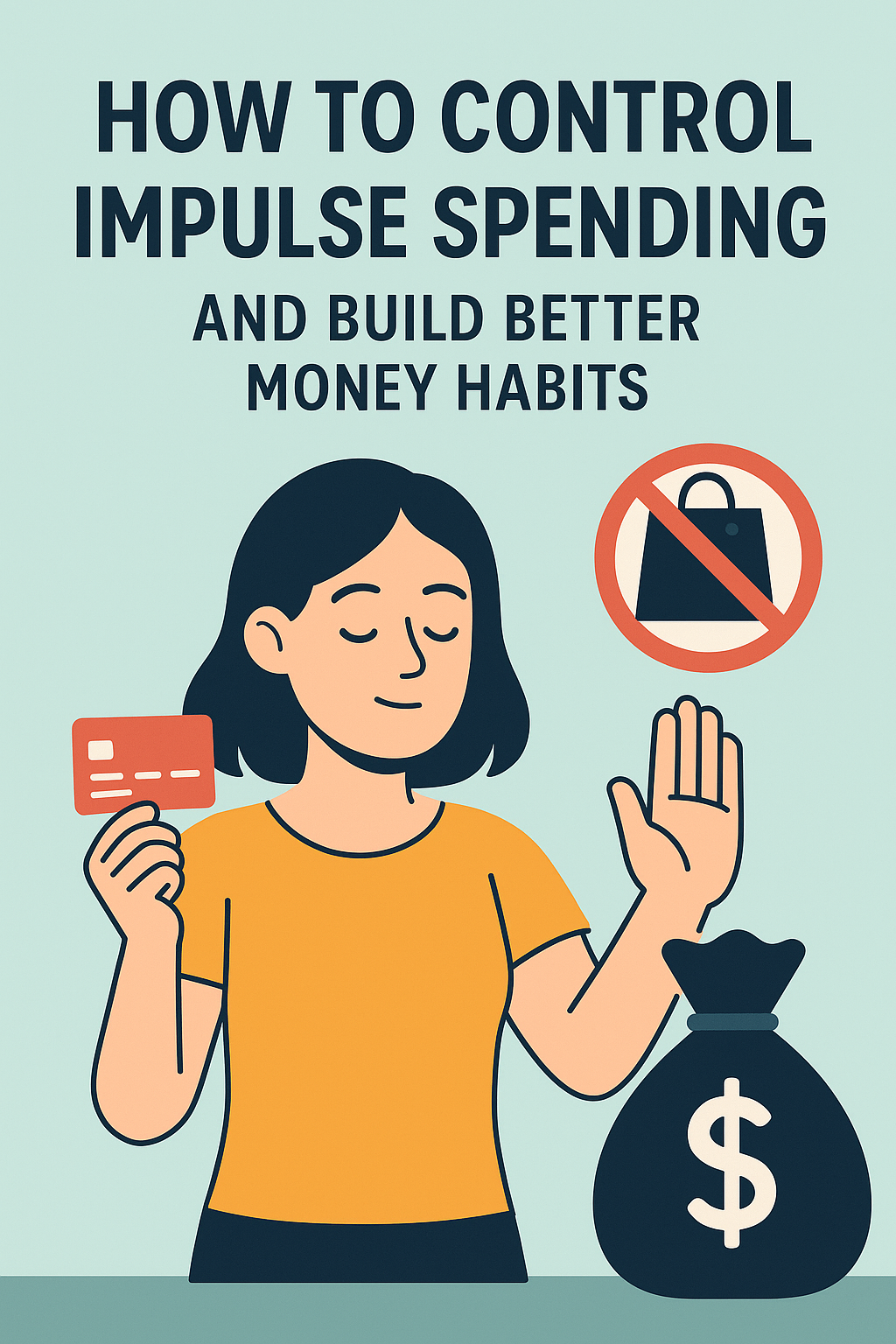Impulse spending is one of the biggest obstacles to financial stability. You walk into a store for one item and walk out with five. Or maybe you scroll through online shops late at night and click “buy now” before thinking it through. While the occasional splurge is okay, frequent impulsive purchases can derail your financial goals. The good news? You can learn to manage these urges and build better money habits over time.
What Is Impulse Spending?
Impulse spending is when you buy something without planning or considering the long-term impact on your finances. It’s driven by emotion, not necessity, and often leads to regret or buyer’s remorse.
Common triggers include:
- Sales or limited-time offers
- Boredom or stress
- Social media ads and influencer recommendations
- Peer pressure or fear of missing out (FOMO)
Recognizing these triggers is the first step toward changing the habit.
Understand Your Spending Patterns
Before you can change a behavior, you need to understand it. Track your purchases for a full month. Categorize them into:
- Needs (rent, groceries, bills)
- Wants (entertainment, gadgets, clothes)
- Impulse buys (unplanned, unnecessary, or regretful purchases)
Be honest. You might be surprised how much of your income goes to things you didn’t really need or plan for.
Practice the 24-Hour Rule
When you feel the urge to buy something that’s not a necessity, wait 24 hours. If you still want it after that time — and it fits your budget — then consider buying it.
This delay gives you time to reflect and separate emotional desire from genuine need. For bigger purchases, extend the rule to 3 or 7 days. Often, the desire fades once the initial impulse passes.
Set a Monthly Spending Limit for Non-Essentials
Give yourself a realistic budget for “fun” money — dining out, shopping, entertainment. Once that limit is reached, pause any additional non-essential spending until the next month.
This method allows you to enjoy guilt-free purchases while keeping your spending under control. Use a separate card or cash envelope to enforce the limit physically.
Remove Temptations
Out of sight, out of mind. If certain environments or habits trigger impulsive spending, create distance from them.
- Unsubscribe from marketing emails
- Delete shopping apps you don’t need
- Unfollow social media accounts that promote excessive consumption
- Avoid browsing stores “just to look”
Create a digital and physical environment that supports your financial goals instead of undermining them.
Create a Wishlist Instead of Buying Instantly
When you want something, add it to a wishlist instead of buying it immediately. Revisit the list weekly or monthly.
This helps you:
- See patterns in what you desire
- Track how often your interests change
- Prioritize what’s really worth buying
You’ll find that many items lose their appeal over time, saving you money effortlessly.
Set Financial Goals That Motivate You
Having something to work toward makes it easier to say no to impulsive spending. Clear goals give your money a purpose.
Examples:
- Build a $1,000 emergency fund
- Save for a vacation or new laptop
- Pay off a credit card
- Invest $50 a month
Break large goals into smaller milestones and celebrate progress. Keep reminders of your goals visible — on your phone, your mirror, or your desk.
Use Cash for Discretionary Spending
Paying with cash makes you more aware of what you’re spending. Try withdrawing a set amount at the start of the month for discretionary spending and using only that.
Once the cash is gone, you’re done spending in that category until next month. This physical boundary makes it harder to overspend.
Find Healthy Replacements for Shopping
If shopping has become your go-to stress relief or entertainment, replace it with healthier (and cheaper) habits:
- Go for a walk or exercise
- Call a friend or family member
- Watch a movie or read a book
- Start a creative hobby
- Meditate or journal
Over time, these new habits will feel more satisfying and help reduce emotional triggers.
Reflect on Past Purchases
Take time to review your past impulse purchases and ask:
- How often do I use it?
- Would I buy it again?
- Was it worth the money?
This self-reflection helps you learn from past behavior and make better choices in the future. It also builds awareness of your values and spending priorities.
Make Impulse Control a Habit, Not a Restriction
Controlling impulse spending isn’t about being harsh or depriving yourself — it’s about making choices that align with your values and long-term goals.
You’re not saying “no” forever — you’re saying “not right now” to things that don’t matter as much as your bigger goals. That’s a powerful shift that turns money from a source of stress into a tool for freedom.
Every step you take builds discipline, clarity, and control. The more intentional you are with your spending, the more confident you’ll feel — and the closer you’ll get to the life you want.
